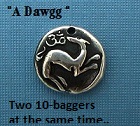WSJournal. Experiment Brings Human Cloning One Ste
Post# of 63904

WSJournal. Experiment Brings Human Cloning One Step Closer.
Scientists have used cloning technology to transform human skin cells into embryonic stem cells, an experiment that may revive the controversy over human cloning. WSJ’s Gautam Naik reports. Photo: OHSU - Video.
Scientists have used cloning technology to transform human skin cells into embryonic stem cells, an experiment that may revive the controversy over human cloning.
The researchers stopped well short of creating a human clone. But they showed, for the first time, that it is possible to create cloned embryonic stem cells that are genetically identical to the person from whom they are derived.
These stem cells could go on to differentiate into heart, nerve, muscle, bone and all the other tissue types that make up a human body.

Since the birth of Dolly the sheep in 1996, researchers have cloned about 20 species, including rabbits, goats, cows and cats. Yet they have been unable to create biologically identical copies of any monkey or primate, including humans, possibly because their reproductive biology is more complicated.
But the refinements described Wednesday in the latest experiment suggest that "it's a matter of time before they produce a cloned monkey," said Jose Cibelli, a cloning expert at Michigan State University, who wasn't involved in the study . It also means, he added, "that they are one step closer to where the efficiency is high enough that someone is willing to try" to clone a person, though that remains a distant—and to some, disturbing—prospect.
The experiment was published online in the journal Cell. It was funded by Oregon Health and Science University and a grant from Leducq Foundation of France.

Stem cell colony developed through cloning.
The researchers weren't simply trying to reach a cloning milestone. Instead, they were looking for a better way to make fresh human tissue for the treatment of severe injuries or disease. Lab-grown tissue has the potential to transform medicine, though it is still a long way from routine clinical use. For example, fresh nerve cells could alleviate spinal-cord injuries, or newly made heart cells could repair a site scarred by a heart attack.
One way to harvest fresh tissue is from human embryos. That is controversial because the embryos get destroyed in the process. Another way is to reprogram mature cells into an embryonic-like state, which can then be turned into other tissues of the body. But this method is relatively new and has yet to yield consistent results.
A third approach is to use cloning, as described in the Cell paper. This technique can yield fresh tissue that is an exact genetic match for the patient for whom it is intended.
The scientists first removed the DNA from an unfertilized human egg, and then inserted a patient's mature skin cell—containing the patient's DNA—into that egg. Next, they prompted a chemical reaction, causing the cells to fuse and begin development.
That led to a blastocyst, a hollow ball of 50 to 100 cells. For a fetus to form, the blastocyst must be implanted in a womb. An inner clump of cells in the blastocyst goes on to form the embryo, while an outer layer goes on to make the placenta.
For the tissue-growing experiment, the researchers focused on the clump of cells containing embryonic stem cells.
With the help of certain "growth" chemicals, they were able to transform the stem cells into "various cell lines and tissues, including beating human heart cells," said Shoukhrat Mitalipov, a developmental biologist at Oregon Health and Science University in Portland, Ore., and a lead author of the study.
The achievement is a long way from creating a cloned human embryo. Even if the entire blastocyst had been implanted into a womb, it wouldn't have yielded a human clone. The blastocyst was "missing a few cell types that it would need to implant" and was suffering other deficiencies, said Dr. Mitalipov.
Never mind the prospect of cloned humans; despite years of experiments, scientists have failed to clone monkeys.
Dr. Mitalipov said his lab had tried transplanting entire blastocysts into a monkey's womb, but those experiments hadn't yielded a single successful pregnancy.
"We don't know why this is," said Dr. Mitalipov. "You can make embryonic stem cells, but it doesn't mean the embryo will implant."
He speculates that one reason why it may be more difficult to clone monkeys and humans is because the egg cells are more fragile than those of other species.
Dr. Mitalipov's main goal is to use cloning to treat illnesses. He next plans to use lab-made tissue and see if he can successfully treat a degenerative, blindness-causing eye disease in monkeys.
 (0)
(0) (0)
(0)